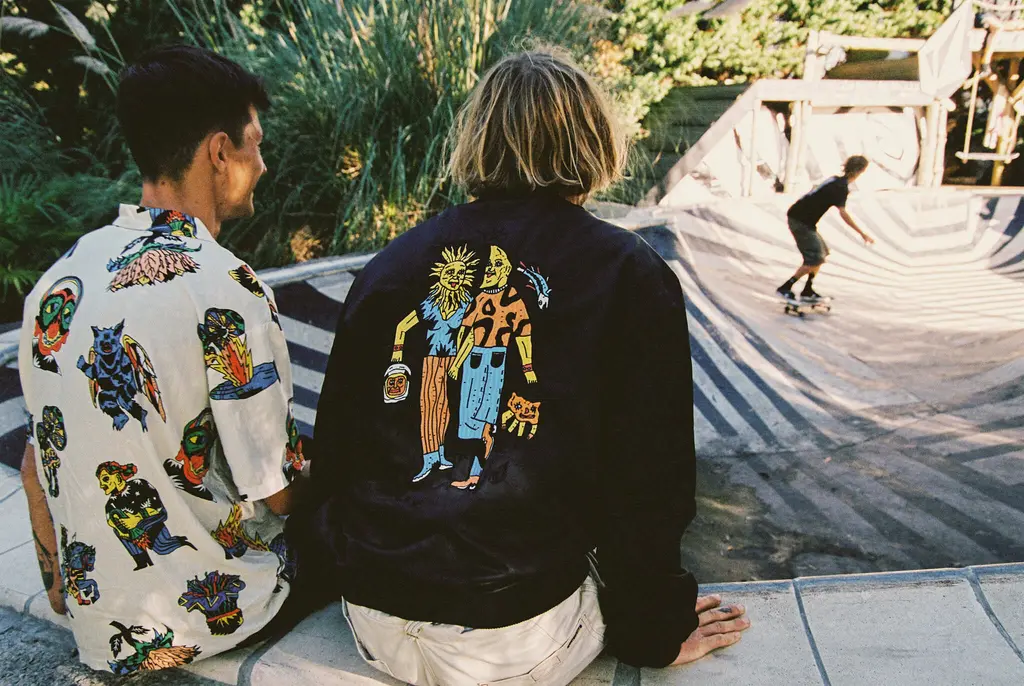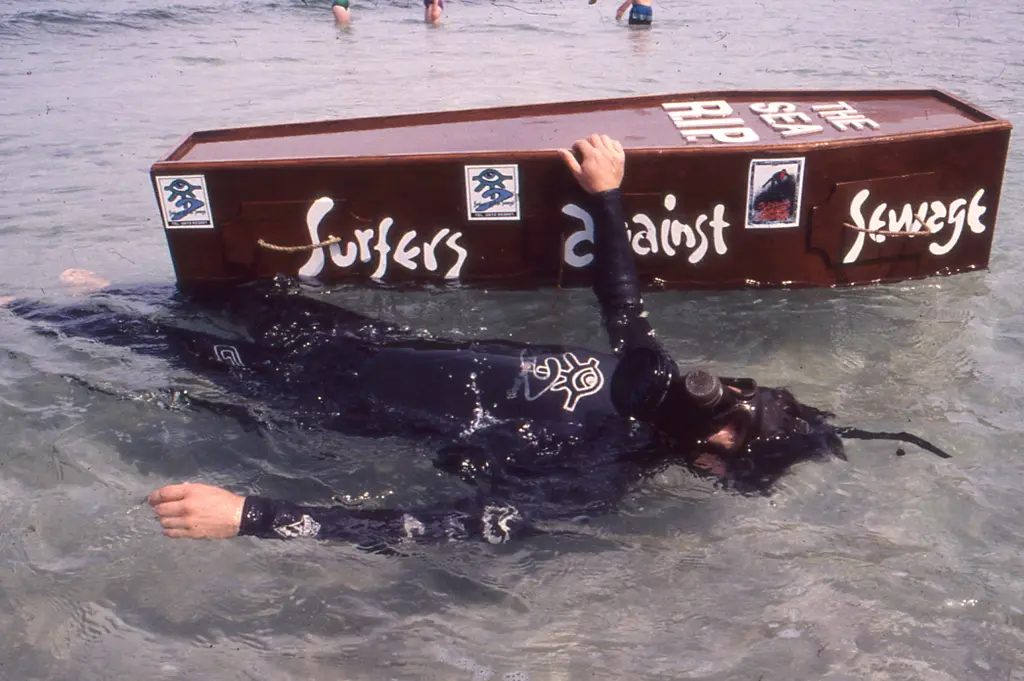How surfers destroyed an idyllic Indonesian island
- Text by Huck HQ
- Photography by Point of Change

This is a tale of disease, disappearance and death – of black magic, malaria, culture clashes and Coca Cola. It all began in the 1970s when two Aussie surfers stumbled across the ‘perfect wave,’ a point on the remote Indonesian island of Nias. Little did they know, their discovery would set off a chain reaction that would have devastating unintended consequences for this island community.
Point of Change is an award-winning documentary by Rebecca Coley that unearths a story that many surfers and islanders would prefer to forget. Blending previously unseen Super 8 archive, contemporary interviews and animation, the film investigates the dark forces that ‘surfer colonialism’ can unleash. But by speaking to all parties, the film weaves a more nuanced narrative, to reveal a story far more complex than merely positive or negative effects. As always in life, reality is often a confusing shade of grey.
Ahead of the UK première of Point of Change at London Surf Film Festival, Huck spoke to director Rebecca about surfing’s impact on traditional communities and telling this sensitive tale from multiple perspectives.
How did you learn about the story of the point on Nias? What made you feel there was a film there?
I first heard about Nias through friends when I was in Australia working and stopped off on my way home. I loved the wave & there was something about the place, I was intrigued by a feeling or vibe I couldn’t quite put my finger on. It felt unlike anywhere I’d ever been before in my life. I heard stories about the first surfers and there were rumours of malaria and black magic, so I was intrigued. Then as I began to dig deeper, the more I found out, the more I knew this was an important story to tell.
On my journey to making the film I visited first as a tourist, then I visited as part of an NGO aid trip after the tsunami, then I stayed and lived for a couple of years on and off. So, it was also through really immersing in the culture and having deeper relationships with people that the bigger feature film idea came to be.
Could you tell us a bit about the huge impact that surfers ‘discovering’ Nias had on the island and its people?
At first the locals didn’t know what to make of these white guys… They talked about the colonials returning. They didn’t know if they had guns or shields or what they were carrying. Then they saw them dancing on the water and they’re more curious. Slowly trading and communication starts to happen. Like anything, people try to keep a secret, but they also want to share an amazing experience with friends. Slowly, word trickles out and it wasn’t long before The Point was in surf magazines and films. The pinnacle was Coca Cola turning up to make a commercial there. The unintended consequences were opening the floodgates, I guess, but they never could have known how crazy it would get.
The film tries to walk the line in that big grey area in the middle where there are positives and negatives effects of all that happens. Yes ‘paradise’ isn’t pristine anymore, and that is devastating. But someone like Bonne Gea who is a local muslim girl, becomes Indonesia’s first woman champion surfer & Asian champion surfer and escapes a life of arranged marriage she didn’t want, so she is happy about it. So it is complicated and there are different layers to it.


How did you settle on this hybrid documentary style to tell this story?
Kevin and John went to Nias in 1975 with their Super 8 camera and tripod, so there’s this beautiful, magical footage of Lagundi Bay exactly as they found it. It took a while to track that down in someone’s attic and get it telecined. I don’t want to spoil the story but there’s also amazing footage of 1976 and more of the characters who turned up. That was an amazing moment to realise we had something to tell that part of the story. But it wasn’t enough.
We also had the challenge of bringing all these different formats together. I’d shot with various digital cameras over the years and we had all these different aspect ratios and formats for all the different footage, so that was another part of why we landed on animation. We worked on the story as being a journey through time that suited the various formats, but also worked for the overall themes of the film.
The animation is like the subconscious of the film and adds layers to the meaning. We only used animation in those important moments where we needed to tell a part of the story we had nothing else for, but was also an important beat in the film. I met Maxime, who did all the animation, in a pub in New Cross about ten years earlier and we talked about it a lot before we were finally able to afford to do it.
For the ‘80s section I met Dick Hoole at his house in Byron Bay and we went through his 16mm on a Steenbeck editing machine, which was great as a celluloid lover. He let us use some unseen footage from his trips to make Storm Riders and Asian Paradise in the late ‘70s and ‘80s, but again it took a while. With the help of the Australian Surf Film Archive we got the footage digitised, telecined, graded etc.
I always felt the story deserved to be so much more than talking heads and so there’s a creative approach to retelling the history. Including the locals’ perspective and mixing the archive and animation in an evocative way, hopefully takes the audience on this odyssey through time.


Does surfing have a ‘colonial mindset’ problem? How did you broach this issue in the film?
That’s a big question and a short answer is yes, to an extent. Of course, every surfer is different and every local is different and every place is different. But just by the nature of the fact that we as ‘Westerners’ are privileged to travel to these destinations and have an economic advantage, means that even without meaning to, we can have an impact we might not intend. So being aware of that is the first step to change. In the film, I give the context of the history of colonialism in Nias to understand the locals’ perspective, give context to what happens next and to let people make up their own minds. Nowadays it might not be a conscious type of colonialism, however all that has gone before has led us to where we are today. So the problem is that we are only there and able to interact in the way we do in the context of all that has gone before.
What are the lessons we can draw from the story of Nias? Do you think surfing is beginning to recognise the impact it can have on fragile communities – or is there still lots of work to be done?
I want the audience to watch the film and make up their own mind. I like the fact that so far audiences have come out with lots of questions. That’s interesting and is how we can get the conversations going.
Yes, I think some surfers recognise that and there is change happening on some level for sure and that is great. If we take surfing out of it — it’s an issue in lots of different sports and activities and places. So there’s hope, surfing can be a force for good, too. But there’s definitely still work to be done.
London Surf Film Festival presents the UK première of Point of Change, plus a special filmmaker Q&A with director Rebecca Coley on Thursday November 23 at Riverside Studios.
You might like

Maryam El Gardoum is breaking new shores for Morocco’s indigenous surfers
The Amazigh Atlantic — Through her groundbreaking career and popular surf school, the five-time Moroccan champion is helping women find their places in the waves.
Written by: Sam Haddad

Volcom teams up with Bob Mollema for the latest in its Featured Artist Series
True to This — The boardsports lifestyle brand will host an art show in Biarritz to celebrate the Dutch illustrators’ second capsule collection.
Written by: Huck

A new documentary spotlights Ecuador’s women surfers fighting climate change
Ceibo — Co-directed by Maddie Meddings and Lucy Small, the film focuses on the work and story of Pacha Light, a wave rider who lived off-grid before reconnecting with her country’s activist heritage.
Written by: Hannah Bentley

The rebellious roots of Cornwall’s surfing scene
100 years of waveriding — Despite past attempts to ban the sport from beaches, surfers have remained as integral, conservationist presences in England’s southwestern tip. A new exhibition in Falmouth traces its long history in the area.
Written by: Ella Glossop

In Queens, local surfers are moulding a neighbourhood in their own renegade images
Rockaway breaks — On a little-known stretch of beach in eastern New York City, an ecosystem of wave catchers, and the local bars and restaurants that fuel them, is seeing a boom. Paolo Bicchieri meets the residents and business owners behind the growing swell.
Written by: Paolo Bicchieri

The Chinese youth movement ditching big cities for the coast
In ’Fissure of a Sweetdream’ photographer Jialin Yan documents the growing number of Chinese young people turning their backs on careerist grind in favour of a slower pace of life on Hainan Island.
Written by: Isaac Muk

